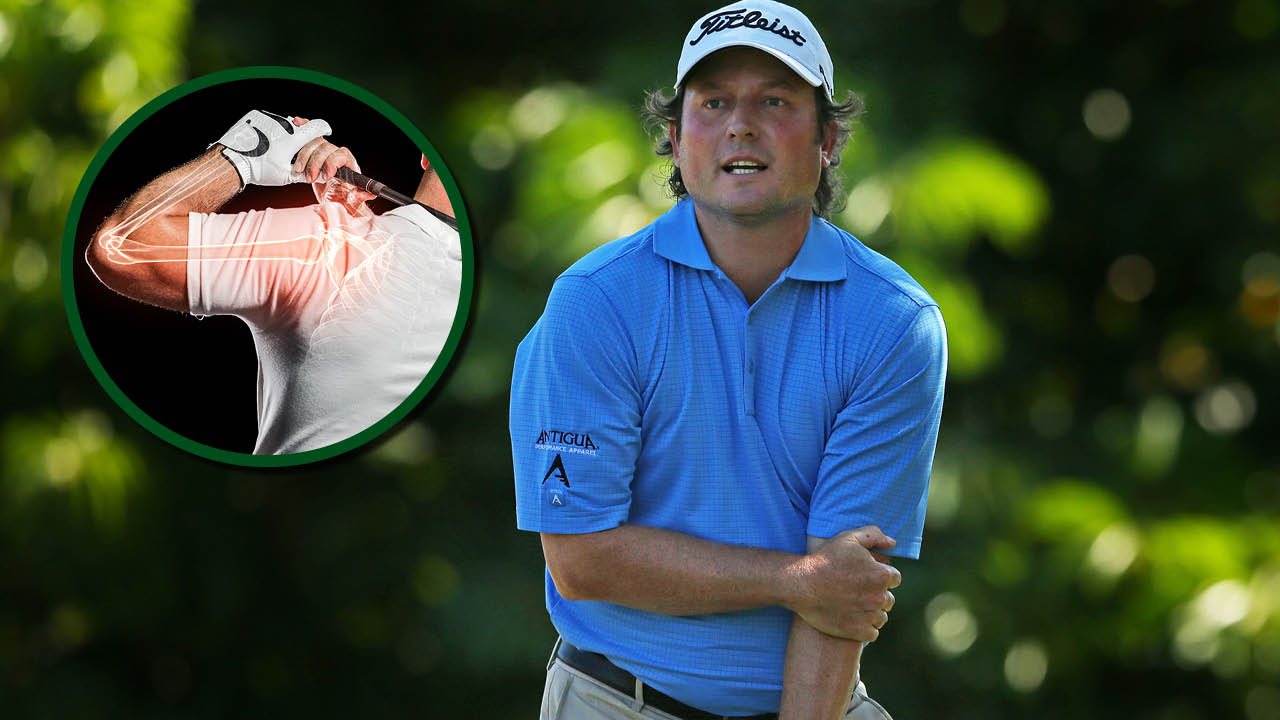What Is Golfer's Elbow?
In this video and article, we find out everything you need to know about golfer's elbow and how to treat it


Golfer's elbow, formally known as Medial Epicondylitis, is characterised by pain from the elbow to the wrist on the medial (inside) side. This is due to inflammation of the tendons that connect the elbow to the wrist caused by the repetitive motions of the wrist and arm.
In the video and article below, we run through the cause of this injury, the common treatments and how golfers can alleviate symptoms.
What is golfer's elbow?
Golfers commonly suffer from this due to the stress on the forearm caused by swinging and striking of the golf club. This causes tiny tears in the tendons of the flexor muscles which can lead to pain.
Golfer’s elbow affects less than 1% of people and is equally common in males and females. It mostly affects those in the 40 to 60 age range. People usually report symptoms of pain at the medial epicondyle (bony bump at the inside of the elbow), a stiff elbow, weak hand and wrist, and sometimes even numbness and tingling of the ring and little finger.

How can golfer's elbow be treated?
The mainstay of treatment for golfer's elbow is cessation of playing golf because symptoms will usually cease without treatment when you stop the activities that aggravate it. Alternatively, it is advised to take breaks when possible and attempting to stay 'golf fit'.
RICE (rest, ice, compression, elevation) is recommended when the joints are painful. Anti-inflammatory medications, arm braces, wrist splints, physiotherapy, steroid injections, and massages are also management choices that people opt for.

Can you prevent golfer's elbow?
To prevent golfer's elbow, there are a wide range of stretches that can be performed to stretch the wrist joint regularly. You can strengthen your forearm muscles by using weights or squeezing tennis balls. You should also ensure you have the correct form and you are using the correct equipment.
Subscribe to the Golf Monthly newsletter to stay up to date with all the latest tour news, equipment news, reviews, head-to-heads and buyer’s guides from our team of experienced experts.

A lifelong golf fan, Andy graduated in 2019 with a degree in Sports Journalism and got his first role in the industry as the Instruction Editor for National Club Golfer. From there, he decided to go freelance and now covers a variety of topics for Golf Monthly.
Andy took up the game at the age of seven and even harboured ambitions of a career in the professional ranks for a spell. That didn’t pan out, but he still enjoys his weekend golf at Royal Troon and holds a scratch handicap. As a side note, he's made five holes-in-one and could quite possibly be Retief Goosen’s biggest fan.
As well as the above, some of Andy's work has featured on websites such as goal.com, dailyrecord.co.uk, and theopen.com.
What's in Andy's bag?
Driver: Callaway Mavrik Sub-Zero (9°)
3-wood: TaylorMade Stealth 2 Plus (15°)
Driving iron: Titleist U500 (17°)
Irons: Mizuno mp32 (4-PW)
Wedges: Titleist Vokey SM9 (50°, 54° and 58°)
Putter: Titleist Scotty Cameron Newport 2.5
Ball: TaylorMade TP5x